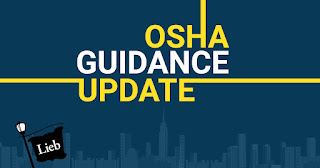On November 6, 2021, the 5th Circuit Court of Appeals stayed the OSHA Vaccine Emergency Temporary Standard (which we explained in this blog). However, the Circuit set a short briefing schedule and required the Government to respond to petitioners' motion for a permanent injunction by 5:00 PM on November 8th, which they did, and the petitioners to reply by 5:00 PM on November 9th, which they did.
However, the stay seems to be a splashy headline about absolutely nothing. Specifically, the Emergency Temporary Standard's compliance date is not until January 4, 2022 and it impossible that the legality of the Emergency Temporary Standard is not determined before then. More so, as the Government points out, in great detail within their response, this case will be in Multidstrict Litigation "on or about November 16—21 days before the December 7 date that petitioners allege is the earliest date that any employee could be required to receive a vaccine and 51 days before petitioners’ employees would be required to start testing." Here, the 5th Circuit choosing to go it alone, is really strange.
Regardless, the ultimate determination in this case will likely involve a ruling as to whether the United States Code (29 USC 655(c)), permitted OSHA to issue the vaccine Emergency Temporary Standard. The applicable Code section reads:
OSHA shall provide, without regard to the requirements
of chapter 5, title 5, United States Code [5 USCS §§ 500
et seq.], for an emergency temporary standard to take
immediate effect upon publication in the Federal Register
if he determines (A) that employees are exposed to grave
danger from exposure to substances or agents determined
to be toxic or physically harmful or from new hazards, and
(B) that such emergency standard is necessary to protect
employees from such danger.
Stated otherwise, the question before the Multidistrict Court is going to be whether OSHA has power to issue the Standard. To get to that answer, it is helpful to understand that a grave danger means one that causes "incurable, permanent, or fatal consequences to workers, as opposed to easily curable and fleeting effects on their health," according to precedent.
Now, to make matters even more interesting, even if OSHA loses on this Emergency Temporary Standard before the Multidistrict Court, it can nonetheless issue a vaccine requirement through traditional rulemaking so long as such a requirement is "'reasonably necessary or appropriate' to address a 'significant risk' of harm in the workplace." As you can see, we are just in the starting gate and this horse race hasn't yet even started. Stay tuned.





